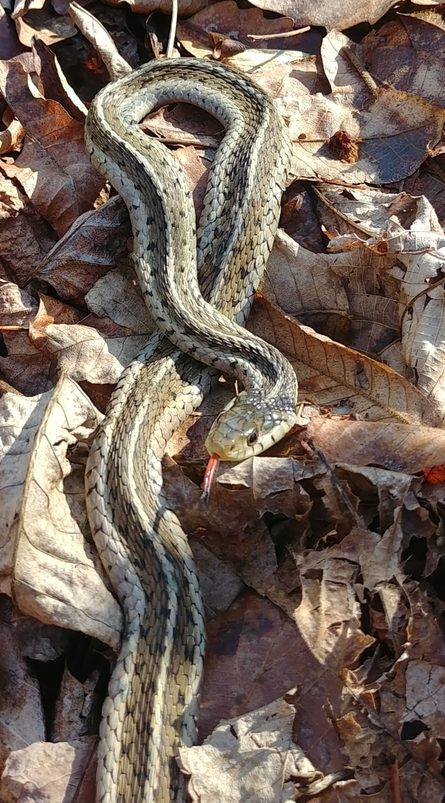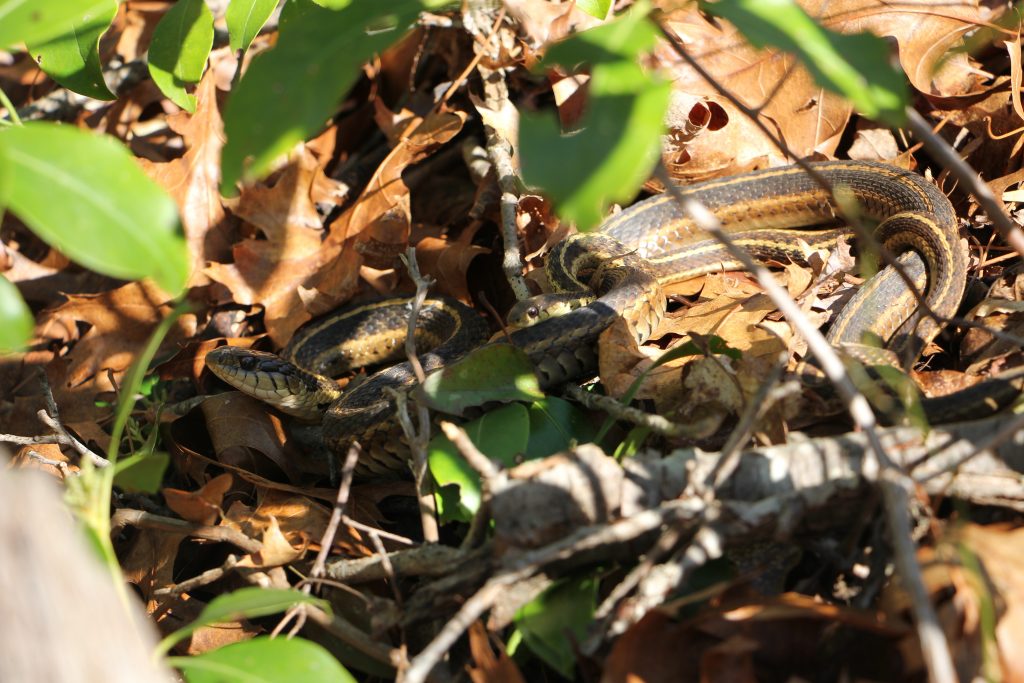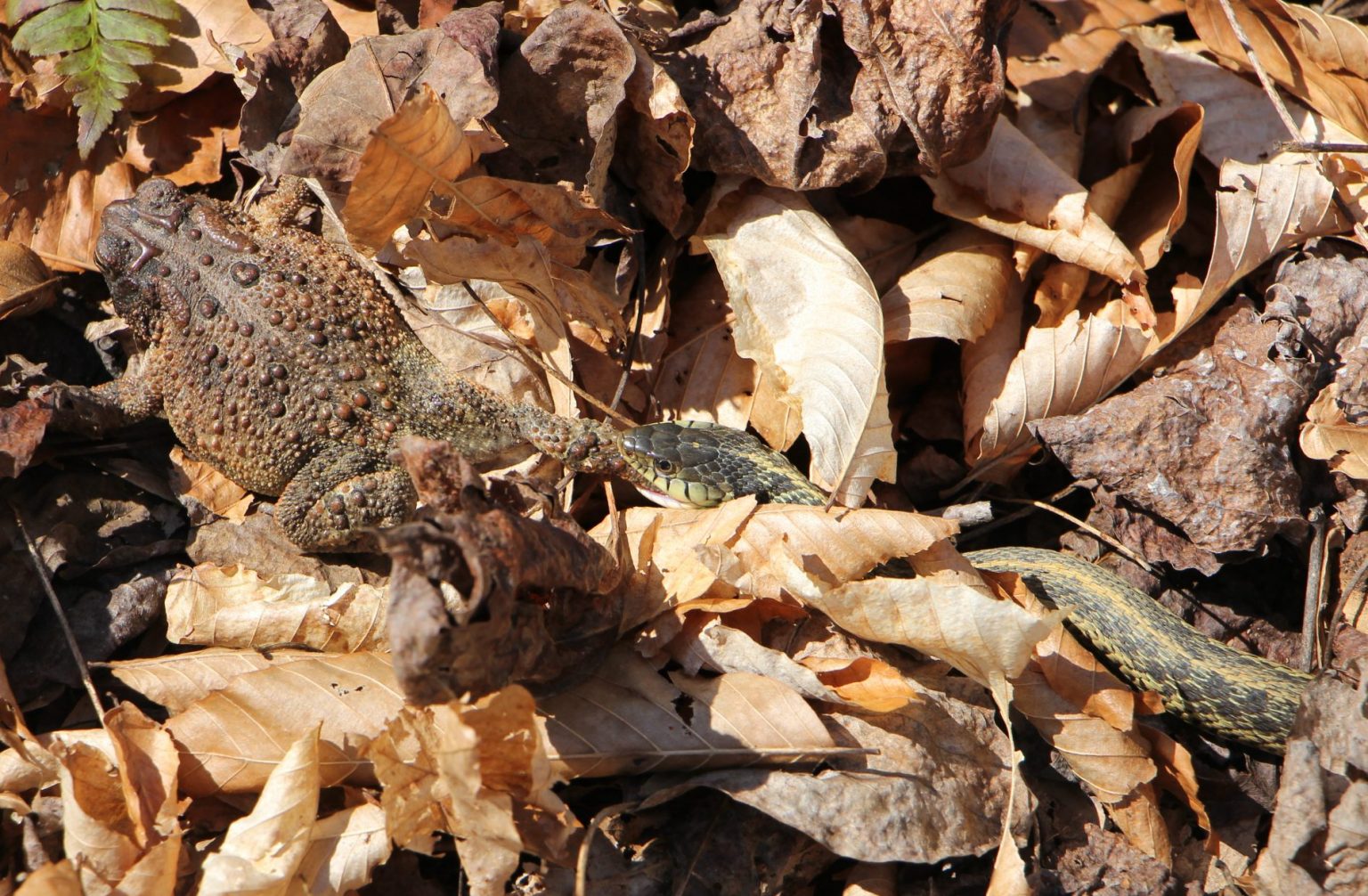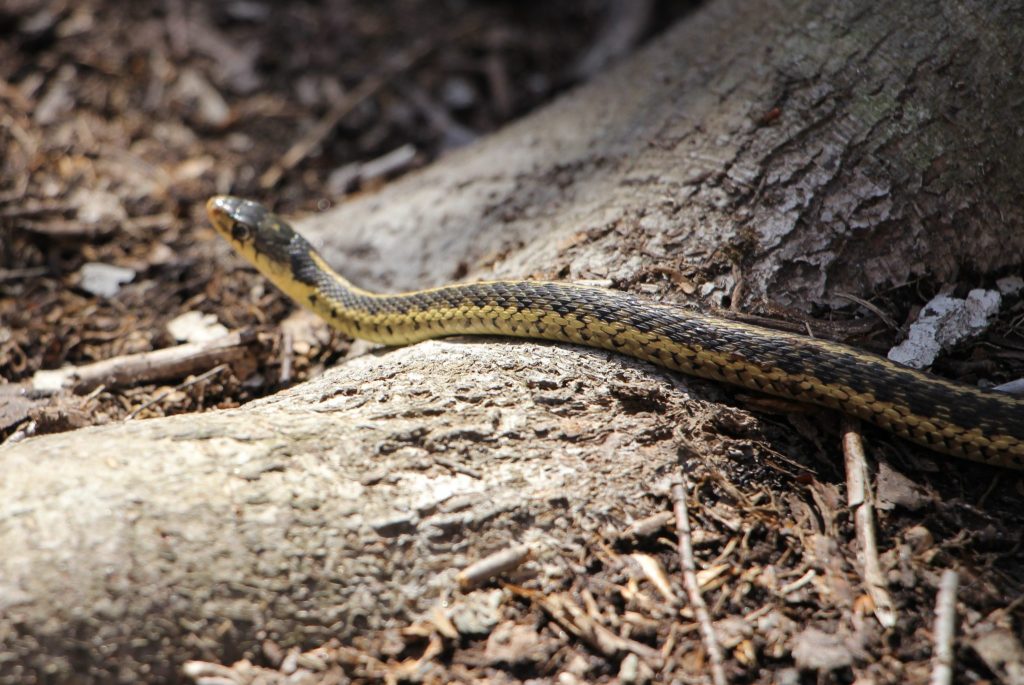
Last weekend was the first time I witnessed reptiles on the move in the Preserve! In honor of their emergence, this #sciencesaturday is dedicated to the first snake I saw this spring: the common garter snake (Thamnophis sirtalis). The harmless eastern garter snake was also listed as the state snake of Virginia in 2016, and we even share it as the reptile state symbol with Massachusetts.

Garter snakes, a medium-sized reptile that grows up to two feet long, are widely found throughout the diversity of North and Central America. They are distinguishable by yellow or white stripes down their green/black/brown body. Garter snakes are emerging from brumation, a period of dormancy where they slow down their metabolism and activity and do not eat (but still need to drink). Similar to hibernation for mammals, however, these reptiles will gather in larger groups to wait out the colder months in dens.

Once they venture above ground, the males move first, trying to warm up in the sun to be ready to mate with the larger females, which produce a sex-specific pheromone to attract male snakes in droves (a scent other males try to imitate to lure competing males away from the females). These mating balls can be made up of up to 25 males vying to copulate, and leads to intense competition.
Afterwards, females can store the male’s sperm before fertilizing the eggs internally. Because garter snakes are ovoviviparous, the eggs are incubated in the lower abdomen until they hatch inside the mother, and she gives birth to live young. Gestation is about two to three months, and litter size varies from 3 to 80+ young. As juveniles, they are a tasty snack for other critters like raccoons, birds of prey, shrews, and even large frogs.

Garter snakes are mostly harmless to humans (if bitten, it might cause itching or a rash but is not deadly), but they do have a mildly venomous saliva to help them defend themselves and catch their prey. As carnivores, garter snakes eat any animal smaller than them either on land or in the water. When eating amphibians, like frogs, toads, and newts, garter snakes are not only resistant to their prey’s poison but can absorb it to become poisonous themselves. *Remember, venomous is something that bites or stings and makes you sick, but poisonous is something that you touch or ingest that makes you sick. Garter snakes are one of the few snakes that can be both!

Look for these smooth and cool species and their other scaly friends as you hike at the Preserve this weekend. Keep your eyes peeled not only on the ground, but through some of the lower branches of the mountain laurel and spice bush, and on any sunny rock where they may be basking. Please avoid handling them, as they can release a foul-smelling odor from their anal glands – another one of their forms of defense!

I found two baby snakes, they were laying upside down on my walk way from my front porch. Its had a yellow stomach. This make a second one. I have found snake skin in my back yard. When I went back to put it away it was gone. For two days my toilets begain to boiler, what should I do?
Comments are closed.